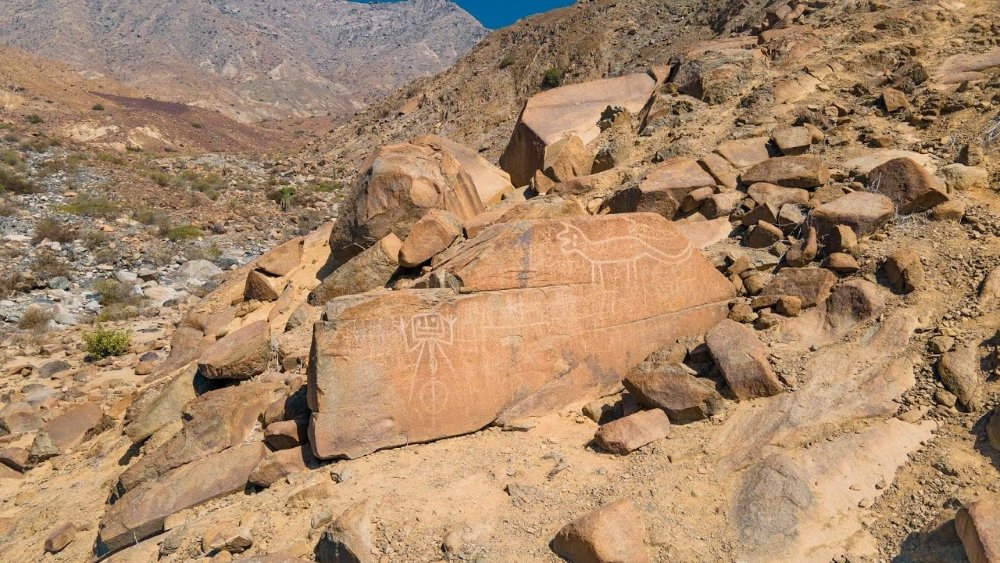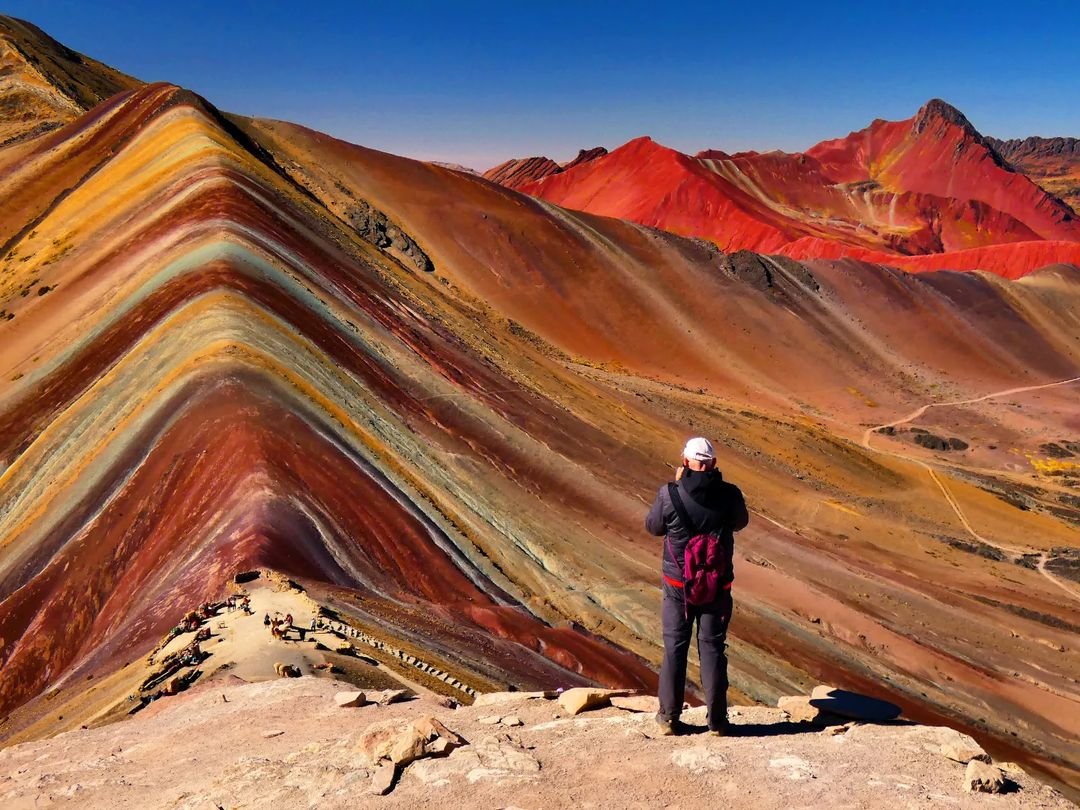
Petroglyphs of Queneto | La Libertad
The Queneto petroglyphs are a set of rock engravings located in La Libertad, a region in northern Peru. These petroglyphs are pre-Columbian rock art and are located in the area of Queneto, near the city of Trujillo.
The Queneto petroglyphs are known for their geometric and zoomorphic representations, which include animal figures and abstract symbols carved into rocks. These representations offer important clues about the culture and beliefs of the ancient civilizations that inhabited the region.
History of the Petroglyphs of Queneto | La Libertad
The petroglyphs of Queneto, located in the La Libertad region of Peru, are part of pre-Columbian rock art that has fascinated archaeologists and scholars for decades. These petroglyphs consist of carvings on rocks, dating back to ancient times, providing important insights into the cultures that inhabited the area.
The petroglyphs of Queneto date back to pre-Columbian periods, possibly between 1000 and 1500 AD. These engravings were created by the cultures that inhabited the region long before the arrival of the Spanish.
- Location and Characteristics:
They are found in the Queneto area, near the city of Trujillo, on the northern coast of Peru. The carvings are on rocks native to the region and depict a variety of geometric designs, abstract symbols, as well as zoomorphic and anthropomorphic figures.
-
Meaning and Cultural Context:
The petroglyphs of Queneto hold deep cultural significance. They represent the worldview, religious beliefs, daily activities, and possibly important historical events for the communities that created them. These carvings may have served as visual records of myths, rituals, or significant astronomical events.
- Archaeological Importance:
For archaeologists and scholars, the petroglyphs of Queneto are crucial for understanding the history and evolution of ancient societies in the region. Through the analysis of these carvings, aspects of social organization, economy, trade, and cultural interactions of pre-Columbian civilizations can be inferred.
- Conservation and Preservation:
Due to their historical and cultural importance, the petroglyphs of Queneto are protected by Peruvian authorities. It is essential to preserve these sites for future generations, not only as tangible cultural heritage but also as a source of knowledge about the ancestral past of the region.
In summary, the petroglyphs of Queneto in La Libertad, Peru, offer a fascinating glimpse into the pre-Columbian past of the region, providing valuable insights into the cultures that thrived in this territory before the arrival of Europeans.
What do we find in the petroglyphs of Queneto?
In the petroglyphs of Queneto, we find a variety of carved representations on rocks that provide significant insights into the life and beliefs of the pre-Columbian cultures that inhabited the region. Some of the prominent elements found include:
- Zoomorphic and Anthropomorphic Figures: Carved representations of animals and human figures on the rocks. These figures range from simple silhouettes to more intricate details reflecting local fauna or mythological entities.
- Geometric and Abstract Designs: Geometric patterns such as circles, interlaced lines, squares, and abstract forms that may have symbolic or decorative meanings. These designs are often integrated with zoomorphic and anthropomorphic figures.
- Symbols and Specific Marks: In addition to more complex figures, petroglyphs may contain specific symbols or marks that could have religious, calendrical, or ceremonial connotations for the cultures that created them.
- Narrative Scenes or Sequences: Some petroglyphs may depict narrative scenes illustrating historical events, rituals, myths, or daily activities of ancient communities.
- Tools and Technology: Occasionally, petroglyphs include representations of tools, weapons, or other artifacts that may have been used by the pre-Columbian cultures.
Together, these elements provide a fascinating glimpse into the material and spiritual culture of the ancient civilizations that inhabited the Queneto region in La Libertad, Peru. The study and analysis of the petroglyphs of Queneto are crucial for gaining a better understanding of the history and worldview of these ancient peoples.

How to get to the petroglyphs of Queneto?
To reach the petroglyphs of Queneto in the La Libertad region of Peru, you typically follow these steps:
- Arrive in Trujillo: The usual starting point to visit the petroglyphs of Queneto is Trujillo, the capital city of La Libertad region. Trujillo is accessible by road from Lima and other major cities in Peru.
- Land Transport to Queneto: From Trujillo, you can take a private vehicle, taxi, or join an organized tour that will take you to the Queneto area. The approximate distance from Trujillo to Queneto is about 40 kilometers.
- Access to the Archaeological Site: Upon reaching Queneto, you may need to undertake a short trek or guided hike to reach the area where the petroglyphs are located. It’s advisable to go with a local guide or someone familiar with the route, as petroglyphs can be situated in natural areas and may be challenging to find without proper guidance.
- Additional Considerations: It’s important to be aware that some archaeological sites may require special permits or authorization to visit, so it’s advisable to inquire in advance about any requirements and conditions for accessing the petroglyphs of Queneto.
- Equipment and Preparation: Wear comfortable and suitable footwear for walking on uneven terrain, and bring water and sun protection as the area can be sunny and warm during the day.
By following these steps and considerations, you can enjoy a visit to the fascinating petroglyphs of Queneto, exploring an important vestige of pre-Columbian rock art in Peru.
Recommendations for visiting the petroglyphs of Queneto
For a fulfilling visit to the petroglyphs of Queneto in La Libertad, Peru, here are some important recommendations:
- Pre-Research: Before you go, research about the petroglyphs of Queneto to understand their history, significance, and how to get there. Make sure you are aware of entry requirements, necessary permits, and any relevant information to properly plan your visit.
- Guide or Tour: It’s advisable to go with a local guide or join an organized tour that is familiar with the area and the petroglyphs. This not only facilitates access to the site but also provides you with detailed and culturally enriching information about the petroglyphs and the civilizations that created them.
- Appropriate Gear: Wear comfortable and suitable clothing for walking on uneven terrain. Sturdy walking shoes, sunscreen, a hat, and water are essential, especially if you plan to hike to reach the petroglyphs.
- Respect for Heritage: Petroglyphs are cultural and archaeological heritage. Respect signage and site rules. Avoid touching the petroglyphs to preserve their integrity and longevity.
- Environmental Preservation: Besides the petroglyphs, the area may have ecological significance. Avoid leaving trash behind and respect the natural environment. Practice responsible ecotourism during your visit.
- Personal Safety: Ensure basic safety precautions, such as informing someone about your itinerary and carrying a fully charged mobile phone in case of emergencies.
- Timing and Season: Check the site’s opening hours and the best time to visit according to local weather. Some sites may have access restrictions during certain times of the year.
By following these recommendations, you’ll be able to fully enjoy your visit to the petroglyphs of Queneto, exploring and learning about this fascinating cultural legacy of ancient Peruvian civilization.
Petroglyphs of Queneto | La Libertad













